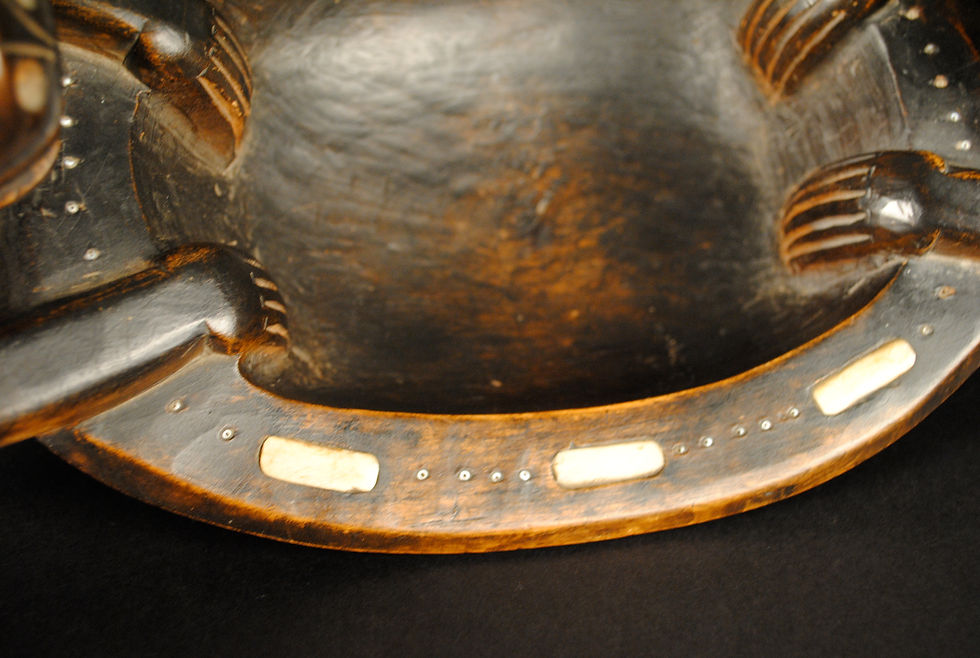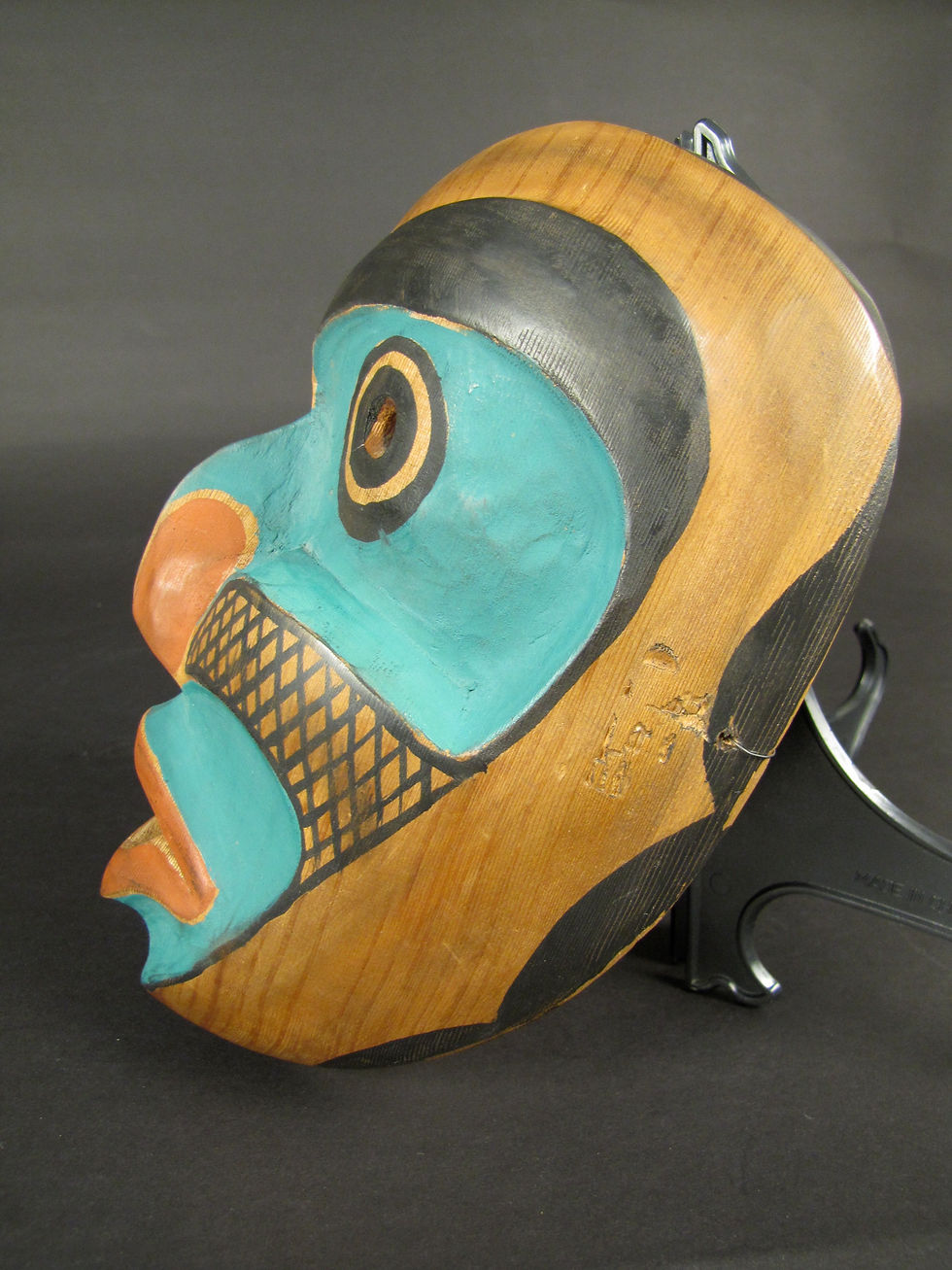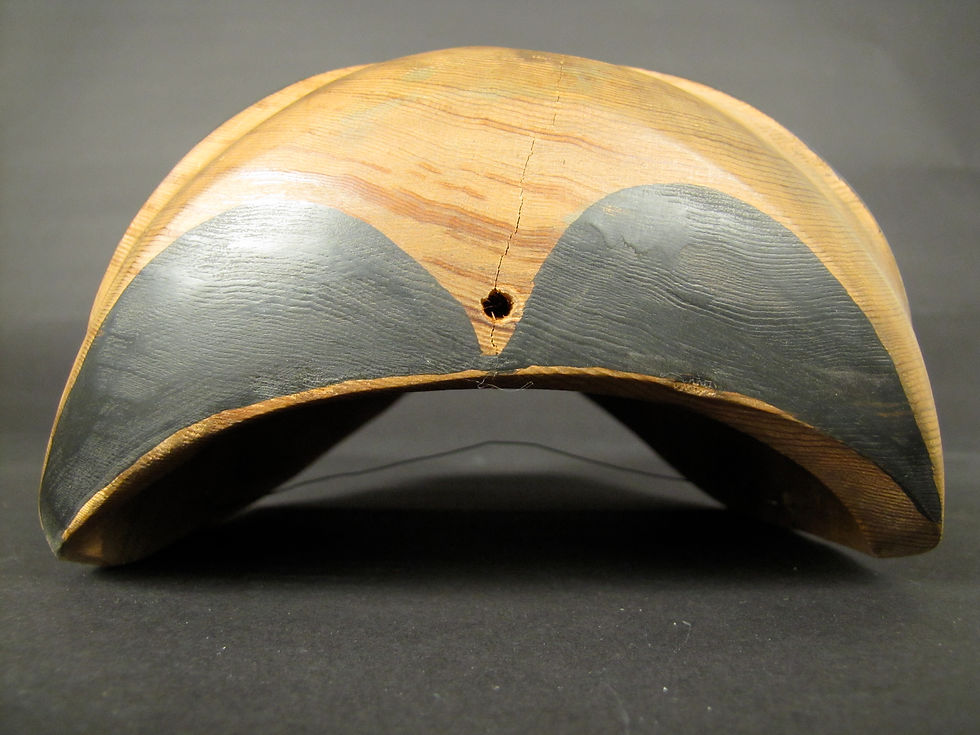The Jim and Vanita Oelschlager
Native American Ethnographic Collection

Ceremonial Feast Bowl, ca. 1890 Tlingit, Bear Clan. Alaska. Cedar, abalone, goat horn, seed beads. 16”x 7”x 7.75” Called a “Chief’s Bear Bowl” it may have been used by either the clan head, (leader of the extended family), or a shaman in ceremony.

Ceremonial Feast Bowl, ca. 1890 Tlingit, Bear Clan. Alaska. Cedar, abalone, goat horn, seed beads. 16”x 7”x 7.75” The bowl illustrates a melding of animal form and bowl function. Northwest Coast art is noted for expressing the symbolic with the functional.

Ceremonial Feast Bowl, ca. 1890 Tlingit, Bear Clan. Alaska. Cedar, abalone, goat horn, seed beads. 16”x 7”x 7.75”

Ceremonial Feast Bowl, ca. 1890 Tlingit, Bear Clan. Alaska. Cedar, abalone, goat horn, seed beads. 16”x 7”x 7.75” The eyes are inset with abalone shell and the edge of the bowl is decorated with ivory and very early Russian trade beads.

Ceremonial Feast Bowl, ca. 1890 Tlingit, Bear Clan. Alaska. Cedar, abalone, goat horn, seed beads. 16”x 7”x 7.75”

Ceremonial Feast Bowl, ca. 1890 Tlingit, Bear Clan. Alaska. Cedar, abalone, goat horn, seed beads. 16”x 7”x 7.75”

Mask, ca. 1930 Kwakiutl. Canada. Wood, Paint. 5” x 10” x 7” These masks are modern and carved for trade, but represent types of masks used in traditional ceremonies.

Mask, ca. 1930 Kwakiutl. Canada. Wood, Paint. 5” x 10” x 7”

Mask, ca. 1930 Kwakiutl. Canada. Wood, Paint. 5” x 10” x 7”
Carved cedar is the most recognized art form of the Northwest Coast. From decorated utilitarian bowls and carved storage boxes, to ceremonial masks, totem poles, rattles, and whistles, the cedar tree is always present.
In this exhibit note the two carved bowls with animal motifs. Bentwood boxes, a small canoe, and a rattle also represent the art form.